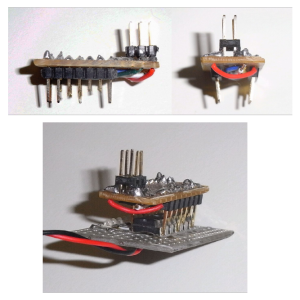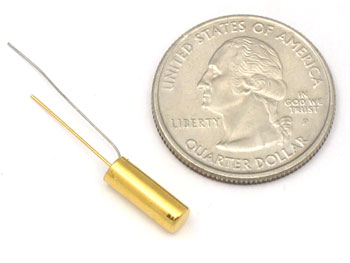[edit, 6 dec 2011, see update for semi-working-ness: http://www.orangenarwhals.com/?p=161]
 |
| board layout |
mmm, fab’d a terribly board together for persistence of vision yoyo so now I can start on code.
[edit, 6 dec 2011, see update for semi-working-ness: http://www.orangenarwhals.com/?p=161]
 |
| board layout |
mmm, fab’d a terribly board together for persistence of vision yoyo so now I can start on code.
scale of 50 yoyos. project will be working on over the next month by dan fourie, laura shumaker, and I as a for-fun project spawned out of an idea my for-grades 2.008 team passed over.
functional parameters:
yoyo with integrated persistence-of-vision display
design parameters:
as of right now, for each side:
 |
| http://olopede.com/media/img/micropov-hand.JPG |
 |
| http://olopede.com/media/img/pov-1.JPG |
 |
| http://tomscircuits.blogspot.com/2009/04/micro-pov.html |
 |
| http://parts.digikey.com/1/parts/389604-8-pin-test-clip-alloy-soic-15-923650-08.html 8pin: $14, 14pin: $17 |
–maybe have a fourth state changing the flicker rate, in case a specific microcontroller’s clock is off (on/off/text programming/flickr rate programming)
cost estimate:
$4.30 for two attiny85’s off of digikey, + shipping. || $2.96 for each attiny88 ($6).
cheap power-hungry LED, well.
(http://scolton.blogspot.com/2011/10/strobe-attack.html) cost ~$50 + shipping for 12 of them off of myropcb. Ladyada has a cost calculator for multiple suppliers and comments for each supplier: http://www.ladyada.net/library/pcb/costcalc.html
That’s like $12 for each yoyo.
So uh… Maybe instead I will sink $80 into buying my own 1/64” and 1/32” spindles for the modela (each good for ~50 boards).
$2 per yoyo
ebay: $25 for 3x 9” by 12” FR4 board. Est.: our boards max 2” diam, so 1.5” square is 6×8 = 48 boards. So maybe $50 for 96 boards, or about
$1 copperclad per yoyo
Buttons:
75c ea @ 100 off of digikey. http://search.digikey.com/us/en/products/B3SN-3112P/SW262CT-ND/60835 (need 200). or ebay, 100 for $7 incl shipping. $14 / 50 = 30c per yoyo. but late shipping…! may be too late for the semester
$3 per yoyo.
phototransistor: 28c each @ 100.
$1.20 per yoyo.
10k resistor, 50kohm, 5x zero ohm, 4x 500 ohm, 1uF cap.
14c each @ 100, cap http://search.digikey.com/us/en/products/C3216X7R1H105K/445-1423-1-ND/569089
0.017 @ 100, 10k, 50k http://search.digikey.com/us/en/products/RC1206FR-0710KL/311-10.0KFRCT-ND/731430 http://search.digikey.com/us/en/products/RC1206FR-0749K9L/311-49.9KFRCT-ND/731890
0.01292 @ 250, total 400 needed, 500ohm http://search.digikey.com/us/en/products/RC1206FR-07499RL/311-499FRCT-ND/731891
total 500 needed
0.00676 @ 500, total 500 needed, zero ohm
(this is if pov circuit does NOT need any resistors etc. ala , these are all for voxel light-programming) http://fab.cba.mit.edu/classes/4.140/people/robert.hemsley/week8.html
total = .14*2 + 0.017*6 + 0.013*4 + 0.007*5 = 0.469
About 50c per yoyo. these are all 1206 packaging!
CR927, 4 batteries each, 200 total: $22 http://www.ebay.com/itm/200-CR927-DL927-LM927-ECR927-KCR927-927-Cell-Battery-E2-/180756330972?pt=US_Batteries&hash=item2a15eab9dc#ht_2063wt_1163, 30 mAh, used in blinkies
44c ea. yoyo
(alternative: rechargeable ones, $1.44 ea 55 mAh TINY 6.8mm diam http://octopart.com/ms621fe-fl11e-seiko-8119587, with solder tabs: $1.29 ea 48mAh 12 mm diam http://octopart.com/br1225-1vc-panasonic-155413, $1.71 550mAh 23 mm diam http://octopart.com/cr-2354%2Fgun-panasonic-13183344
octopart search: http://octopart.com/partsearch/#search/requestData&q=lithium+battery&rangedfilters%5Boutput_voltage%5D%5Bmin%5D=1.5&rangedfilters%5Boutput_voltage%5D%5Bmax%5D=4.9945883802956885&rangedfilters%5Bavg_price%5D%5Bmin%5D=0.24250000000000002&rangedfilters%5Bavg_price%5D%5Bmax%5D=1.8412916540799584&start=10)
accelerometers 0.67 ea @ 100, http://search.digikey.com/us/en/products/MMA7660FCT/MMA7660FCT-ND/2186165, as used by
$1.40 per yoyo
total: $15 per yoyo + some digikey shipping costs, so close to $17 each if we count the aluminum molds and injection molding / thermoforming raw mats as free (due to 2.008). and of course free labor XD
=====
Previous research:
LEDs
If we use those super-efficient LEDs, they are 30c each if we buy 400 (50 yoyos * 8 = 400 LEDs).
(http://www.newark.com/jsp/search/productdetail.jsp?SKU=38K3409&CMP=AFC-OP&CMP=AFC-OP via http://octopart.com/partsearch/#search/requestData&q=Kingbright%20KPTD-3216SURC)
x8 = $3 (if we include shipping)
Total = $118 + $10 shipping (so upward bound of $130)
So, about $2.60 per yoyo
Microcontroller ~$1.50 each http://octopart.com/partsearch/#search/requestData&q=attiny25, maybe $10 for shipping, aka $1.70 per yoyo
Here is how the “spin-activation” would work:
http://cdn.makezine.com/make/2010/06/WP105LEDYo-Yo.pdf
So, at 50 yoyo’s, we’re looking at $6 each which is over our budget. However, I’m confident if we look a bit harder we can get the prices down to $5 each.
=====
Thursday: [everyone] finish the CAD for the molds
Friday: [nancy] check the dims / tolerances with Pat and Dave
Then CAM over the weekend Saturday, say meet for dinner on putz @ 5pm and then CAM (putzgiving is Sunday). Order electrical parts.
Hopefully mill / turn the molds over Mon – Wed before thanksgiving.
Finish electrical design -> gerber and programming over thanksgiving break and order pcbs if ordering them. by 26th
And injection mold / thermoform the week after (done by Friday December 2nd).
Assembly done by Dec 9th.
=====
PoV no accelerometer notes:
I got nanopov example working this weekend — no accelerometer indeed means there’s an optimum speed the display wants to be waved at. wave it too fast and the image gets stretched out, too slow and the whole image isn’t displayed or it’s super-squished.
Oh, Tom went over this in his blog post:
One downside of this design is that there is no synchronisation between movement of the display and the display output. So if e.g. you wave it left-right-left all output is mirror-inverted half the time. Also, there is no stable, repeating image as you would get from a constantly rotating POV.
doing some research for 2.008 instead of freaking out over 6.131 lab
Edit 10/17/2011: Found it! Thanks to Charles.
See explanation of “tilt sensors,” which include both mercury and rolling-ball type ones, here: http://www.ladyada.net/learn/sensors/tilt.html
 |
| http://www.adafruit.com/products/173 |
Cost: $2.00.
(octopart search: http://octopart.com/partsearch/#search/requestData&q=tilt+switch&rangedfilters%5Bavg_price%5D%5Bmin%5D=0.54&rangedfilters%5Bavg_price%5D%5Bmax%5D=2 can maybe get it for $1)
http://smparts.com/-Switches-Rolling-ball-switches-%28AT%29/c0_2_561/index.html — but no prices listed, hah.
Hmm. So I know there was at least one previous design in 2.008 that used these switches. They put two on each side (top and bottom), facing outwards. Then, when the yo-yo spun, both switches would contact (and presumably switch on LEDs). Apparently they had issues with the thermoform shrinking and squeezing the ball switch and preventing it from switching though. All in all, I’m a bit iffy about these rolling ball switches. There’s no way to adjust their sensitivity (although I guess regardless PoV yoyo requires a microcontroller anyway, but the less pin-count the better), so what if it switches on when the the switches are rotated to (left right) and the yo-yo is slightly tilted? We’d be stuck with 100 useless switches.
I like Paulina Mustafa’s design of a flexure switch, she was prototyping this at MITERS (but I can’t find a blog for her). Looks sort of a like a ying-yang design, and the tips are flung outward and make contact with the sides when the yo-yo is spun. She’s using copper-tape, but I think something like conductive glue would be easier to apply.
http://www.instructables.com/id/Conductive-Glue-And-Conductive-Thread-Make-an-LED/step1/Make-Conductive-Glue-Conductive-Paint-and-Conduc/
=====
Earlier Research
via
http://www.helifreak.com/showthread.php?t=33567 “DIY Night Blades”
centrifugal switches:
http://www.atomicmods.com/Categories/Tutorial-1-28-Mini-Z-Rim-Light-Installation.aspx
(spring inside a brass tube)
The batteries are wired in series with the LED and the centrifugal switch. The centrifugal switch is simply a tiny spring inside a brass tube. When you accelerate, the spring swings to the outside and makes contact with the brass tube turning on the lights. It is really quite simple and very reliable. This also makes the batteries last a long time since they are only on while you are driving and you will never forget to turn them off.
types of switches and design of switch contacts (including mercury switch aka “tilt switch”): http://www.allaboutcircuits.com/vol_4/chpt_4/1.html
quora question
http://www.quora.com/Mechanical-Engineering/What-centrifugal-switches-are-suitable-for-use-in-a-yo-yo
still failing to find suppliers o.o
mercury switch:
http://mondo-technology.com/yoyo.html
paperclip style:
http://www.make-digital.com/make/vol22?pg=115#pg117